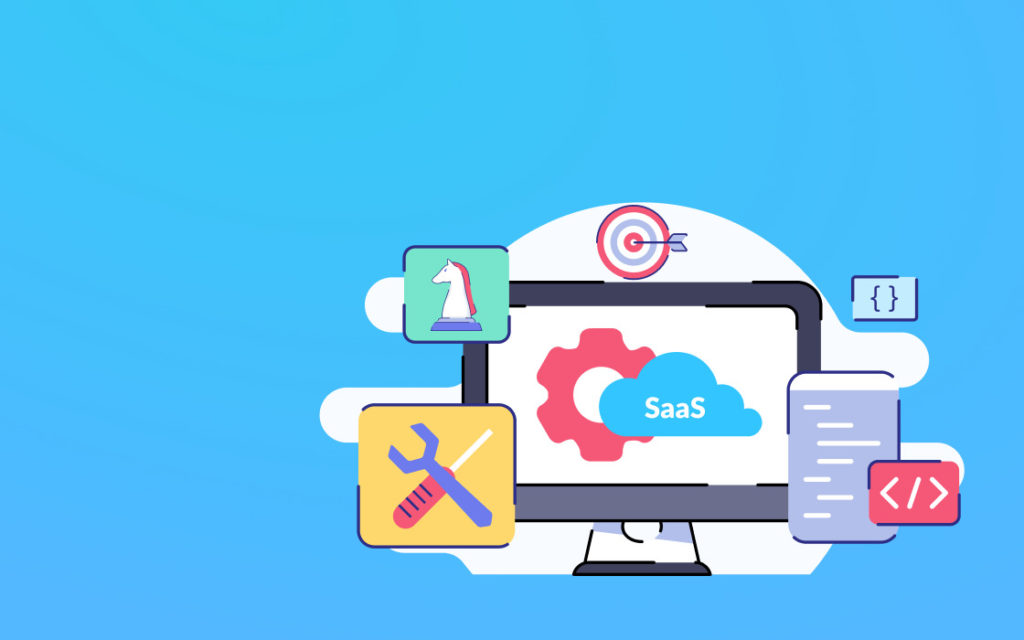Table of Contents
These days businesses of all sorts of different specializations and sizes use custom internal business software to streamline their company processes, automate daily operations, and manage all branches of the company. Some of these businesses are thinking about converting their custom business apps to being SaaS-based. There are obvious and hidden reasons for this tendency.
Based on the extensive experience of our sales team, we have recognized the following reasons for turning the internal software into a Software-as-a-Service solution:
Tech recommendations for migrating to the SaaS development
SaaS application development is one of the most high-potential cross-platform software solutions available, capable of satisfying various business needs of its users. Basically, there are two types of SaaS application development – single-tenant and multi-tenant. In this article, we are talking about transforming the internal software into a SaaS business model, which means that it is the transformation from a single to multi-tenant SaaS. This entails changing functionality and using the new programming languages and frameworks to bring the solution up to the capacity to be able to host a great number of users, eliminating any bugs, errors, or slowdowns.
We have collected useful tech recommendations for SaaS application development here below.
Server selection
SaaS model is a cloud-based software solution where all user data is stored on the cloud and all app and customer data is distributed from different locations (users). The cloud server connects users and the SaaS application functionality, processing the users’ requests and showing the results in the application. The most popular cloud servers are considered to be Amazon Web services, Apache, Microsoft Azure, or any other which will suit your case.
Suitable database
Multi-tenant SaaS development solution implies separate databases for each company that will use the same application, which gives the ability to structure the vital data in different ways. To name a few of the most frequently-used databases: MySQL, PostgreSQL, Mongo DB, among others. The databases also have different features and purposes. They are basically divided into relational and non-relational.
Relational databases structure data in rows and columns while non-relational databases have no limitations in storing data and can be flexible on par with your requirements.
Code maintainability
SaaS application development is a complicated task as the system should be functional, debugged for different users with different devices, OSs, and so on. So before choosing the tech stack for the development of the prospective SaaS solution, developers should think of how the code will be maintained, whether it will be relevant for the next several years, whether it is compact enough and can be easily debugged during testing. The simpler the code that is used, the easier it will be to review and maintain it, resulting in development time and cost savings.
Scalability requirements
SaaS apps should be scalable solutions to be able to provide growing numbers of users with high-quality services/functionality. This point should also be considered when choosing the technical stack for SaaS development or SaaS development consulting.
Angular and React are thought to be some of the best front-end frameworks that are used for building complex software apps, making them available for usage to a large number of audiences, providing them with a pleasant and simple user experience.
Fast time to market
Fast time to market ensures the relevant options and tech stack used in SaaS application development as the quicker you build the product, the quicker it will go to the market to outdo your potential competitors, providing users with immaculate problem-solving software for businesses.
MVP development is advisable to gauge the ballpark performance of the prospective SaaS app and its functionality by testing the so-called MVP (or demo) version on first users that will consequently help make any necessary changes before the final product deployment. However, enhancements don’t end there as app reviews are a regular activity that enhances your SaaS product based on customer experience.
Long-term technological support on offer
Choose the technologies that will be supported by various OSs and devices in the long run. There are many new technologies entering the market but it is advisable to choose trusted ones that eliminate the risk of irrelevant and non-functioning SaaS applications.
Pros and cons of turning to SaaS with us
Turning your internal business software into SaaS software has numerous benefits for your company, but it’s also wise and strategic to be prepared for possible setbacks along the way. All potential risks should be considered in the project risk management plan. No matter if we build the software solution from scratch or join up with the client’s in-house development team, Altamira insists on creating a risk management plan during SaaS application consulting to control all risks that may appear during development including a budget, deadlines, functionality, developers, and so on.
Benefits of SaaS over Internal On-premise Software
- The SaaS software development model is supported by different operating systems and devices. This is a cloud-based solution that doesn’t need to be installed on users` computers as it is accessible via any browser on the web. If users provide feedback about the bugs within particular browsers or devices, the SaaS development or SaaS development consulting company just needs to consider these requests in the next application code reviews.
- SaaS applications are created for specific purposes and target certain needs. So there is no need to spend excessive amounts on sales and marketing in an attempt to find customers.
- Monitoring the number of current users via subscription helps make predictions on the annual revenue and its scaling based on the analysis of new customers’ sales.

SaaS application consulting
Pitfalls of the SaaS business model
- Software-as-a-Service applications need regular investment and functionally extendingupgrading to make the solution relevant for your customers, however, there are also risks that the updated functionality may not suit some of your current users, forcing them to switch over to your competitors;
- The SaaS development market is crowded with various solutions, so the key to success is developing really unique SaaS functionality that resolves problems that cannot be handled by existing, market-available SaaS products, nevertheless, the competition is high and the market research must be comprehensive;
- Some clients working in middle and large businesses may need both versions of software – on-premise and cloud-based, meaning some clients require specific cloud-based solutions in addition to the development of an on-site SaaS app version.
Best practices in migration to the SaaS model
The success of SaaS development can be partially predicted by looking at pivotal things like product experience, relevant functionality, pains of the future customers that can be resolved with your SaaS solution.
Here below we have collected the best practices that need to be taken into account when turning your internal software into a SaaS business model.
How much does it cost to turn your internal software into a SaaS?
The cost of SaaS application development is a relative term as it depends a great deal on the specifics and requirements of your project. SaaS development is commonly complex, consisting of many functional and non-functional requirements to make it suitable not for a particular company but for businesses of the same industry providing them with relevant features.
Therefore, the specifications can take several months depending on the project scope.
Consequently, it is a long road to a full SaaS software development release that requires a significant investment of time, money, and effort.
Turn your business software into SaaS with Altamira
Altamira software development team has relevant expertise in building custom SaaS custom development from scratch, SaaS consulting as well as turning the already existing internal software of our clients into SaaS-type software. The main reason why businesses see a benefit in making the business app available for other users is that the industry isn’t really tech-forward and no market-available solution can meet the demands of these companies. There is a high demand for custom SaaS and someone within your industry may already have or be in the process of developing such breakthrough solutions.
One of our latest clients is related to the retail industry in that it provides an online platform for retailing goods bought from other stores on sale (discounted). Initially, the company wanted to build an internal management system for retail processes. However, after our specialists in cooperation with the client conducted some market research, we have discovered that there is an obvious need for a similar solution for other companies in the niche.
Thus, the custom SaaS product will bring transformation and improvements not only for a single company but for the industry in general making it data-driven and tech-advanced forward.
Saas custom development is a long-lasting and complex process where the market investigation and specs collection can take several months. Consequently, the MVP development, which is advisable, may take at least 6 months, while other types of business automation software take 3-4 months. But it all depends on the project requirements because, for this particular client, the evaluation of project scope and costs has been lasting for 6-8 months.
FAQ
To sum up
Taking everything into account, turning internal software into SaaS development is a long road process to success choosing the suitable SaaS app design, functionality, and architecture. Before turning the internal software into a SaaS development model, it is important to figure out the industry problems and market demand to make its functionality work for future customers. It is better to spend more time gathering specifications with the chosen SaaS development company than building non-conforming SaaS products.






